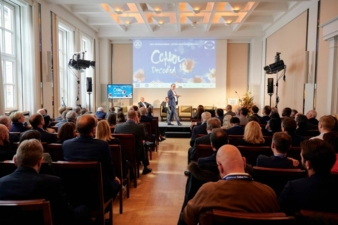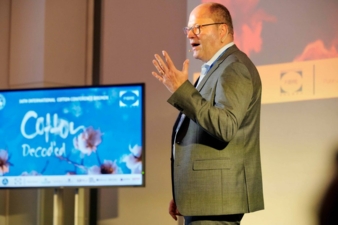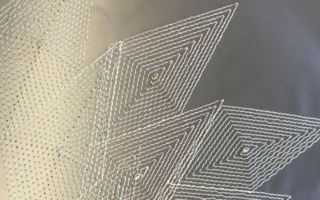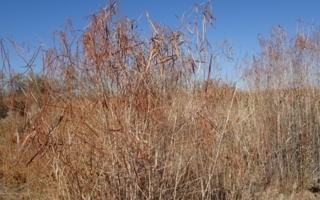26/10/2022 – Event — auf Deutsch lesen
Main topics of the 36th International Cotton Conference Bremen
Embedded in the celebrations marking the 150th birthday of the Bremen Cotton Exchange, the 36th International Cotton Conference took place under the motto “Cotton Decoded”.
Almost 70 speakers added to the success of the conference with their contribution on September 29 and 30. Each conference day started with keynotes in which personalities from the branch critically addressed challenges within the world economy and politics. They dealt with trends on the raw materials markets and with questions about the currently much discussed shortages in logistics, but also with the situation on the financial markets. The speakers included Colin Iles, Executive Manager, Cotton & Sugar at the internationally operating commodities trader Glencore/Viterra, Nils Haupt, Head of Communications at Hapag-Lloyd AG, John Baffes, commodities expert at the World Bank, D.C., and Jörg de Vries-Hippen, Chief Investment Officer and member of the European Executive Committee of Alliance Global Investors.
Sustainability and Climate Protection
In the field of climate protection, the ability of the cotton plant to store carbon in the soil in a climate-neutral manner played a special role. The session illustrated the methods used in agriculture to improve the storage of carbon in the soil and the legal framework that enables the financing of investments in these methods. Life cycle assessment methods play an important role here in order to show the entire carbon footprint over the life of the product from the field to its disposal.
In addition, the conference dealt with processes of the circular economy, in which modern methods of textile recycling were the focus. The biodegradability of cotton also played a key role once more. The conference addressed questions of transparency and traceability within the supply chain and presented efficient, digitally managed control methods, e.g. by means of distributed ledger technology. Using isotope analysis, it could soon be possible to trace the origin of a cotton fibre harvested from the field back to a finished textile.
Innovative Products Made of Cotton
The discussion about new and innovative ways of processing cotton set new accents. It also addressed the need to advance supply chain technology in the apparel industry with digital design programmes for selecting cotton fabrics using 3D views. Also worth mentioning is the presentation by the internationally renowned Italian denim weaver Candiani, who has developed a blend of cotton and natural rubber yarns in his denim fabrics to create a stretch effect. The jeans fabrics produced this way are 100 percent biodegradable. To date, for this purpose elastane made of man-made fibres has primarily been used in fabrics.
EU Cotton Textile Industry and Clothing Retail
A special feature: On the last day the conference highlighted the top quality cotton production within the European Union in the network of the highly specialised downstream textile and clothing industry under the headline “Region in Focus”. During the online session, the opportunities for a stronger positioning and assertiveness of the sector in international competition were shown and discussed.
The total of 13 poster presentations also offered valuable additional inspiration, which increased the added value for the conference participants in Bremen. The posters usefully informed the visitors about relevant topics of the cotton economy sector. The presentations provided by the speakers will soon be available on the website of the Bremen Cotton Exchange.





